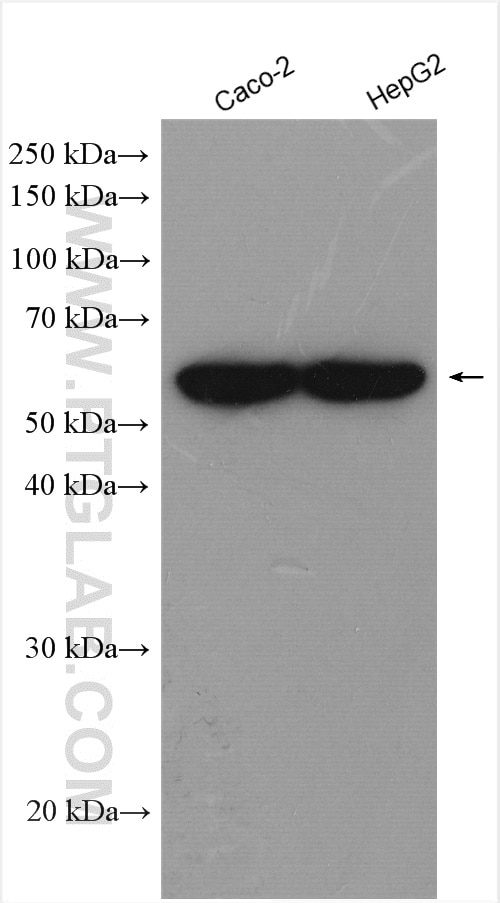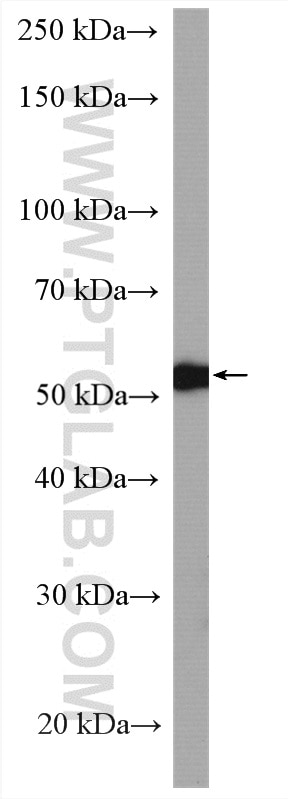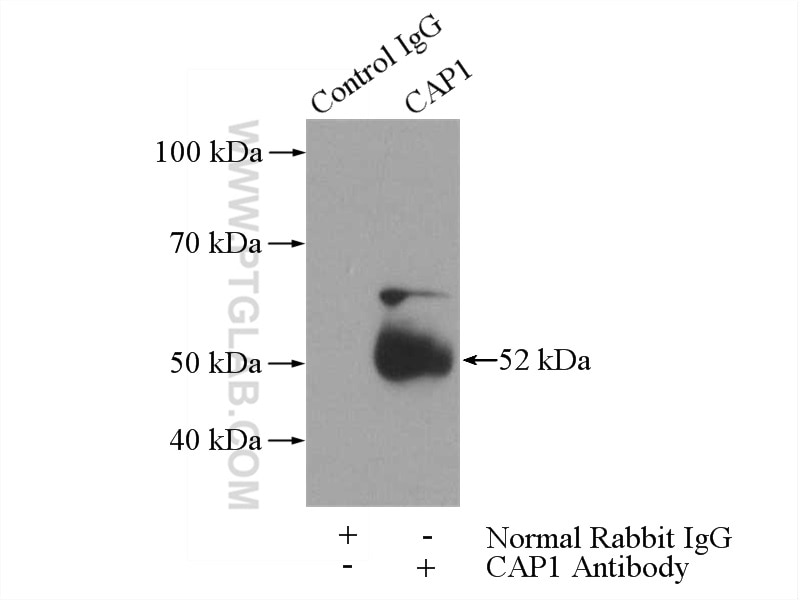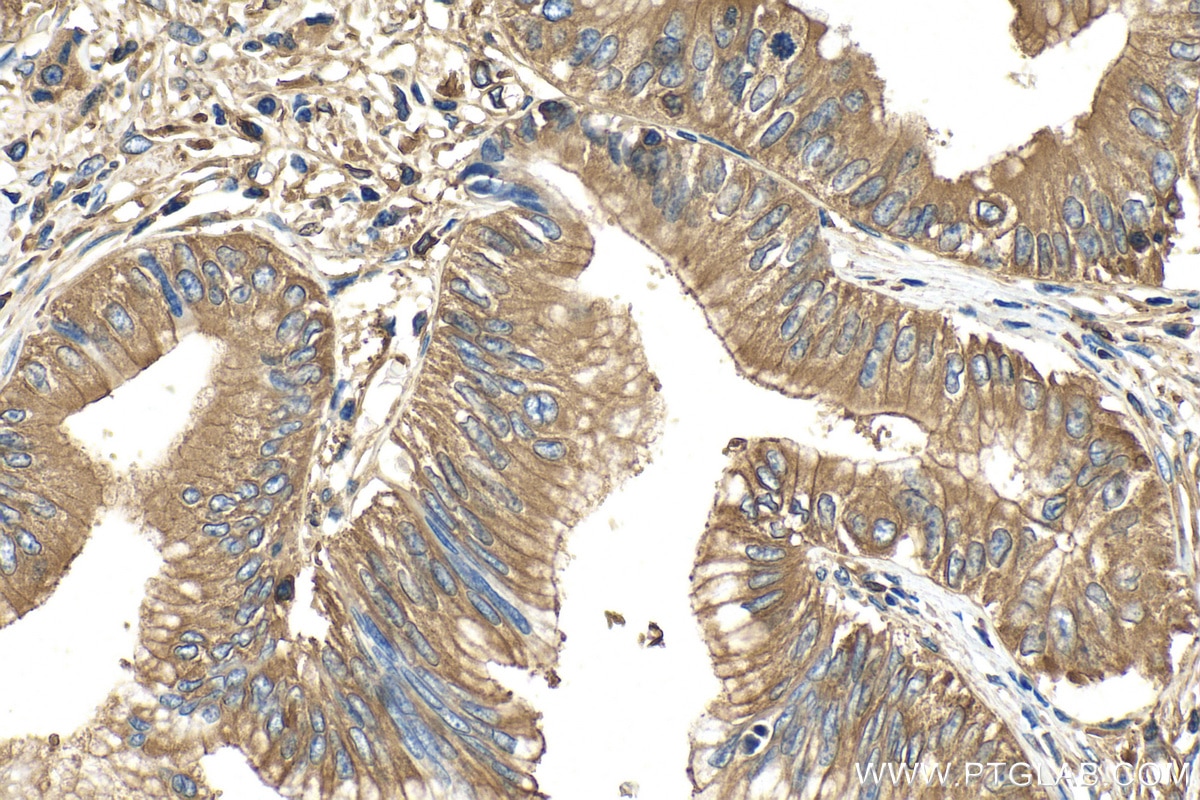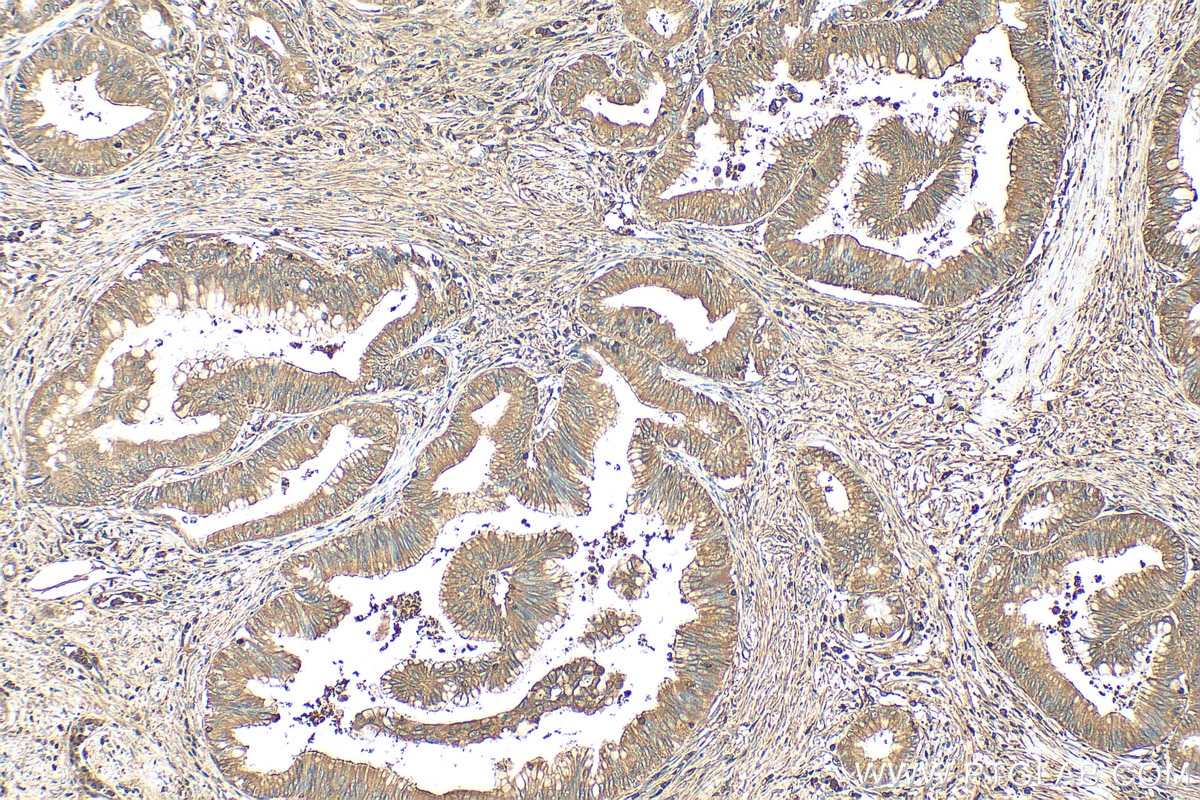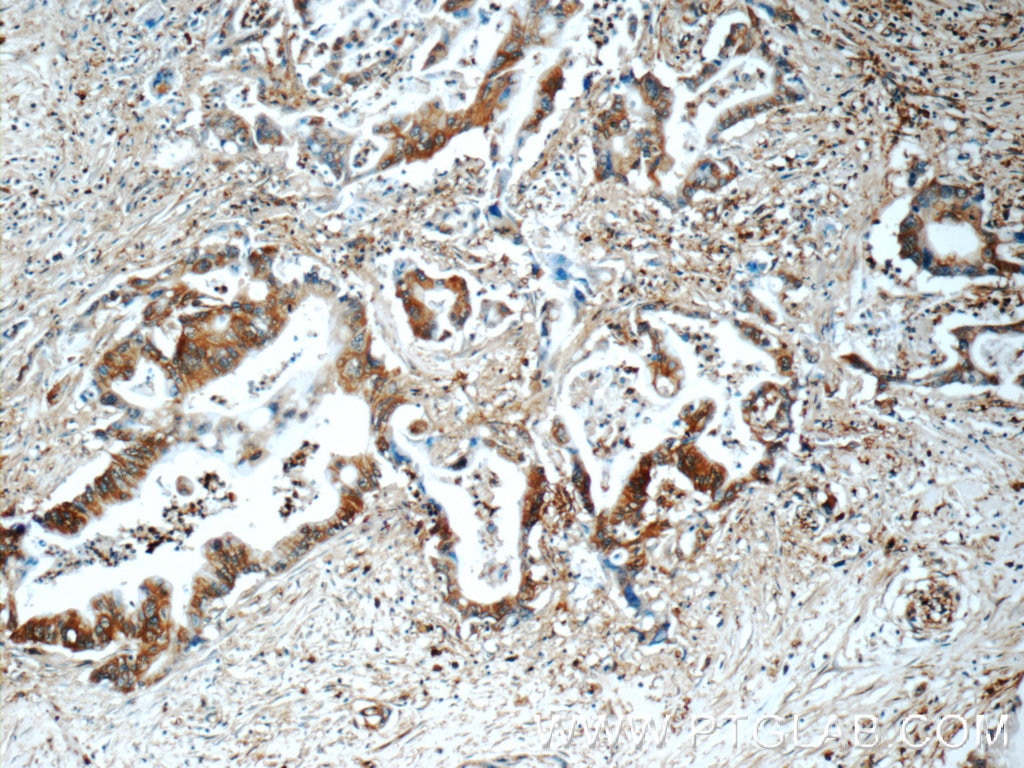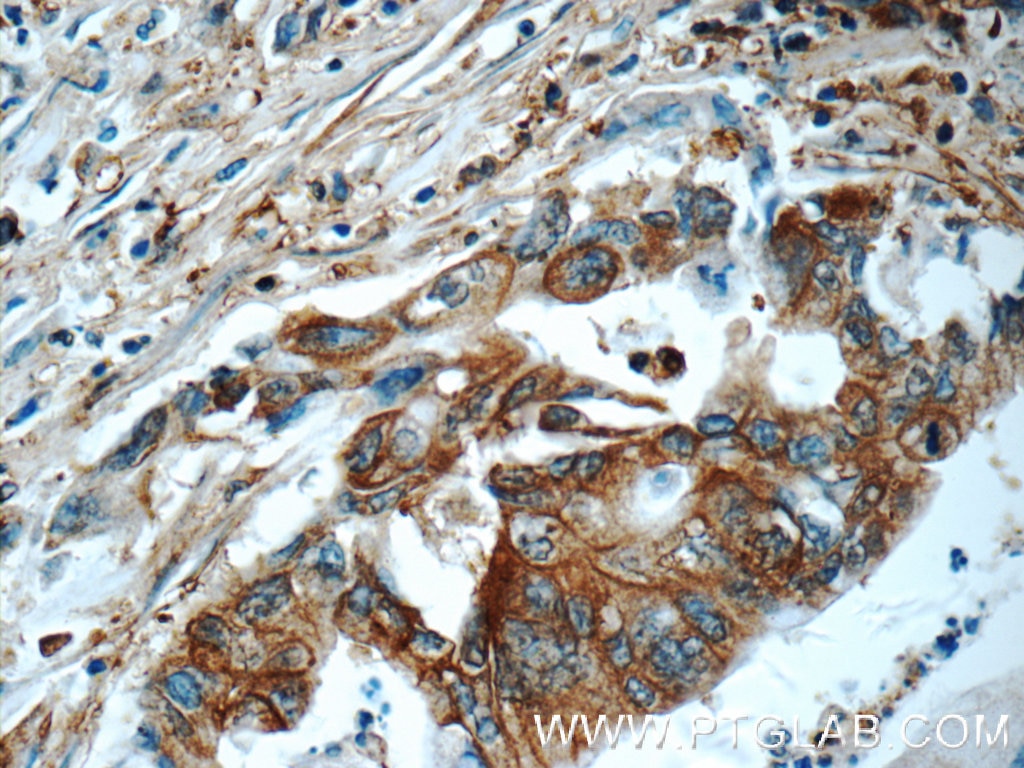- Phare
- Validé par KD/KO
Anticorps Polyclonal de lapin anti-CAP1
CAP1 Polyclonal Antibody for WB, IP, IHC, ELISA
Hôte / Isotype
Lapin / IgG
Réactivité testée
Humain, rat, souris et plus (2)
Applications
WB, IP, IF, IHC, ELISA
Conjugaison
Non conjugué
N° de cat : 16231-1-AP
Synonymes
Galerie de données de validation
Applications testées
| Résultats positifs en WB | cellules Caco-2, cellules COLO 320, cellules HepG2 |
| Résultats positifs en IP | cellules A431 |
| Résultats positifs en IHC | tissu de cancer du pancréas humain, il est suggéré de démasquer l'antigène avec un tampon de TE buffer pH 9.0; (*) À défaut, 'le démasquage de l'antigène peut être 'effectué avec un tampon citrate pH 6,0. |
Dilution recommandée
| Application | Dilution |
|---|---|
| Western Blot (WB) | WB : 1:1000-1:6000 |
| Immunoprécipitation (IP) | IP : 0.5-4.0 ug for 1.0-3.0 mg of total protein lysate |
| Immunohistochimie (IHC) | IHC : 1:50-1:500 |
| It is recommended that this reagent should be titrated in each testing system to obtain optimal results. | |
| Sample-dependent, check data in validation data gallery | |
Applications publiées
| KD/KO | See 2 publications below |
| WB | See 5 publications below |
| IF | See 1 publications below |
Informations sur le produit
16231-1-AP cible CAP1 dans les applications de WB, IP, IF, IHC, ELISA et montre une réactivité avec des échantillons Humain, rat, souris
| Réactivité | Humain, rat, souris |
| Réactivité citée | rat, bovin, Humain, porc, souris |
| Hôte / Isotype | Lapin / IgG |
| Clonalité | Polyclonal |
| Type | Anticorps |
| Immunogène | CAP1 Protéine recombinante Ag8876 |
| Nom complet | CAP, adenylate cyclase-associated protein 1 (yeast) |
| Masse moléculaire calculée | 475 aa, 52 kDa |
| Poids moléculaire observé | 52 kDa |
| Numéro d’acquisition GenBank | BC013963 |
| Symbole du gène | CAP1 |
| Identification du gène (NCBI) | 10487 |
| Conjugaison | Non conjugué |
| Forme | Liquide |
| Méthode de purification | Purification par affinité contre l'antigène |
| Tampon de stockage | PBS avec azoture de sodium à 0,02 % et glycérol à 50 % pH 7,3 |
| Conditions de stockage | Stocker à -20°C. Stable pendant un an après l'expédition. L'aliquotage n'est pas nécessaire pour le stockage à -20oC Les 20ul contiennent 0,1% de BSA. |
Informations générales
CAP1, also known as CAP, CAP1-PEN, belongs to the CAP family and contains 1 C-CAP/cofactor C-like domain. CAP1 binds to monomeric actin and regulates the actin cytoskeleton to control cell size, adhesion, and migration (PMID: 23737525). CAP1 also functions as a receptor for inflammatory cytokine resistin (PMID: 24606903). CAP1 is an abundant and ubiquitously expressed protein. Western blot analysis detected CAP1 at an apparent molecular mass of 52 kDa.
Protocole
| Product Specific Protocols | |
|---|---|
| WB protocol for CAP1 antibody 16231-1-AP | Download protocol |
| IHC protocol for CAP1 antibody 16231-1-AP | Download protocol |
| IP protocol for CAP1 antibody 16231-1-AP | Download protocol |
| Standard Protocols | |
|---|---|
| Click here to view our Standard Protocols |
Publications
| Species | Application | Title |
|---|---|---|
J Biol Chem Cyclase-Associated Protein 1 (CAP1) is a prenyl-binding partner of Rap1 GTPase.
| ||
Viruses Porcine Circovirus Type 2 Induces Single Immunoglobulin Interleukin-1 Related Receptor (SIGIRR) Downregulation to Promote Interleukin-1β Upregulation in Porcine Alveolar Macrophage. | ||
Cell Biochem Funct Cyclase-associated protein 1 is a key negative regulator of milk synthesis and proliferation of bovine mammary epithelial cells.
| ||
Cell Mol Life Sci Functional interdependence of the actin regulators CAP1 and cofilin1 in control of dendritic spine morphology |
